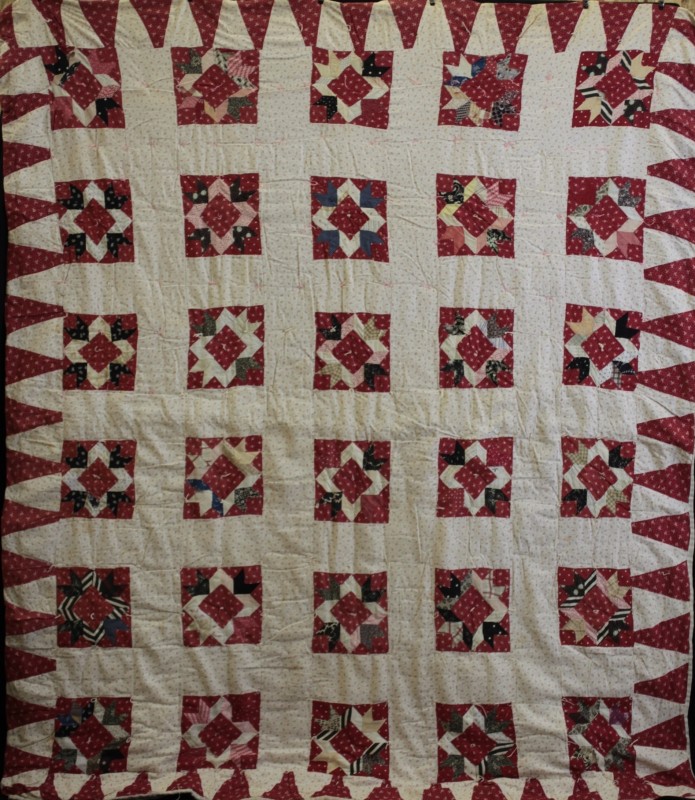
Granny Faulkner quilt, courtesy of the Santiam Historical Society
A rare opportunity came my way a few weeks ago, to examine a selection of quilts that belong to the Santiam Historical Society in Stayton, Oregon. As we carefully unfolded them, examined and photographed, my thoughts drifted to the quiltmakers and their life stories. A quote I’d read recently from Ken Burns, film-maker and quilt collector, came to mind.
“Every quilt represents a moment in time and history – a nexus of individuals and geography and culture that can never be fully recovered, but which is nonetheless represented in strikingly graphic composition.”
Who were these women? Where did they live and perhaps travel from? What relationships were formed? What events in history touched their lives? All of which may have influenced the quilts before my eyes.
One of the quilt labels was particularly intriguing. It read, “The piecing was done by Granny Faulkner 104 years in 1921 near Lebanon Oregon, at the home of my parents Thomas Wentworth & Lillie York Davie.”
Granny Faulkner’s quilt is primarily composed of red, black, and cream-colored cotton fabric in a multitude of designs with other like fabrics (tan, light yellow, and pink) slipped in here and there. The block design is the Arrowhead Star, a tribute to Native Americans, which traces its roots back to Tennessee. Granny designed her quilt with 30 blocks arranged in a pattern of six rows, with five blocks per row. They are framed with border sashing in a traditional sawtooth pattern of red and white. The quilt is backed with blue-gray gingham, has a thin cotton batting, and was tied with pink thread.
My mind kept mulling over the details on the quilt label. Who was Granny Faulkner? Did her use of the unusual Arrowhead Star block have any significance? Thankfully the quilt label provided a few key pieces of information to work with. Granny’s age in 1921, a location near Lebanon, Oregon, and a possible relationship with the Davie family.
I started with the 1920 census records, looking for Thomas and Lillie Davie. They were listed as residents of Tallman, Oregon, now a ghost town located northwest of Lebanon. Their closest neighbors were Joel and Nancy Faulkner. No “granny” in either household. Could there be a connection? Based on the quilt label, assuming it’s correct, Granny should be over 100 years old. The census record lists Nancy Faulkner at 59 years of age. Her husband Joel is 60. I looked for additional Faulkners in the same area and found a few, Marion, Solon, and Elias, all males. No females in the right age range.
Perhaps if I jump back 10 years in the census, again looking at Faulkners in Linn County, searching for older females over 90 years old. I find roughly the same group scattered throughout the county, Joel, Marion, Solon, and Elias, but no older females listed in their households. Feels like a bit of a dead end. The best lead still appears to be the 1920 census showing the Joel Faulkner and Thomas Davie families as neighbors.
How about a different angle of research, this time using historic newspapers? Perhaps Granny’s advanced age was newsworthy? It’s worth a look.
From the March 28, 1915 issue of the Oregonian, “Pioneer 98, Eyesight Keen. Mrs. Mary M. Faulkner is Oldest Person Living in Linn.” The article boasted that “her eyesight is practically unimpaired and she can see people passing on the road 100 yards from her residence….Mrs. Faulkner is a pioneer of Linn County and has resided for more than half a century on the same farm, where she now makes her home with her son, Joel Faulkner.” Bingo. Looks like our best lead from the 1920 census is panning out.
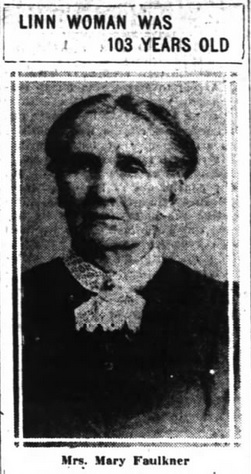
Granny Mary Faulkner obituary photo from Oregon Daily Journal, 3 June 1918.
An obituary from the Oregon Daily Journal dated May 21, 1918, provides further information. “Oregon Pioneer Aged 103, is Dead. Mrs. Mary M. Faulkner succumbs near Albany.” Age 103 not 104, our quilt label is off by a year. And the publication date? 1918. No wonder we couldn’t find Granny on the 1920 census. She’d been laid to rest long before that.
The obituary goes on to state her full name, Mrs. Mary Magdalene Faulkner and gives further genealogical information which helps us connect her with the other Faulkners in Linn County. “She was born in Ohio and crossed the plains with her husband T.J. Faulkner, in 1851. Mr. Faulkner died about 20 years ago.” She was survived by seven children, six boys and one girl. Four of her children lived in Linn County at the time of her death, Elias, Marion, Solon, and Joel while the other three were in Eastern Oregon.
Two questions remain, in my mind. Why the unusual choice of the Arrowhead Star block? Could there be more to the relationship between Granny and the Davie family? I went back to the census records and followed the Joel Faulkner family back through time a bit further and discovered something interesting. In the 1900 census Joel had three stepchildren living in his household, one named Lilly York. Her birthplace is listed as Tennessee. By the 1920 census Lilly had married Thomas Davie and we find them living next door to her mother and step-father Joel, the son of Granny. Additional records confirm the events and relationships. Lilly York Davie is a step-granddaughter to our Granny. And I’d like to believe that Granny chose the Arrowhead Star block to honor Lilly and her birthplace.
A beautiful quilt that shows the link between an early Oregon pioneer’s life, the place and time in which she lived, and her relationships. Where each quilting line, block pattern, color, and fabric chosen were a part of their life story.
This article was written by Kaylyn Mabey for the Statesman Journal where it was printed 20 May 2018. It is reproduced here with sources for reference purposes.
Sources:
- “Linn Woman was 103 Years Old – Mrs. Mary Faulkner” Oregon Daily Journal (Portland, OR), 3 June 1918
- “Pioneer 98, Eyesight Keen. Mrs. Mary M. Faulkner is Oldest Person Living in Linn.” Oregonian (Portland, OR), March 28, 1915
- Santiam Historical Society Records
- 1900-1920 US Federal Census Records
- Encyclopedia of Pieced Quilt Patterns, Barbara Brackman, American Quilters Society, First Edition, 1993



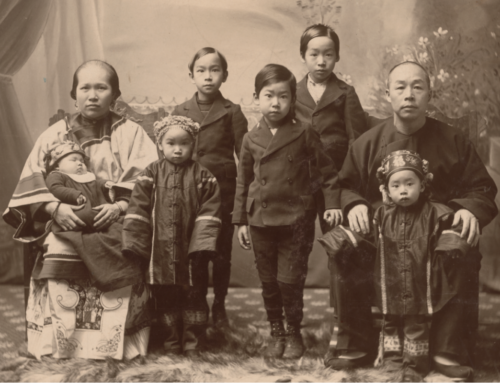
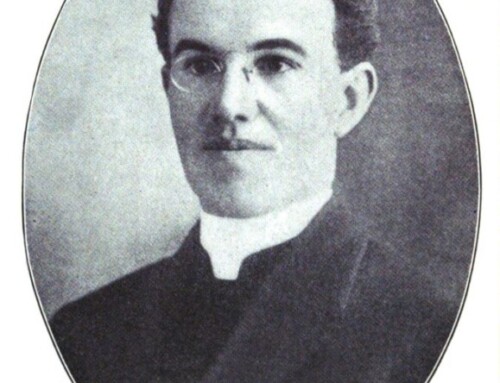
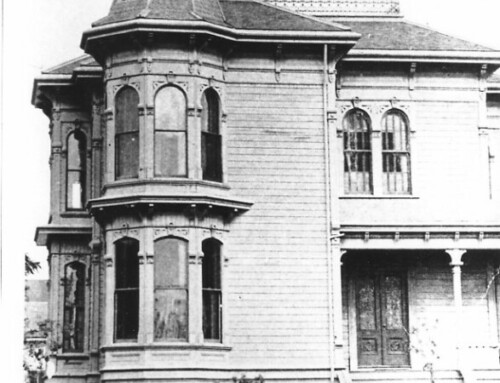
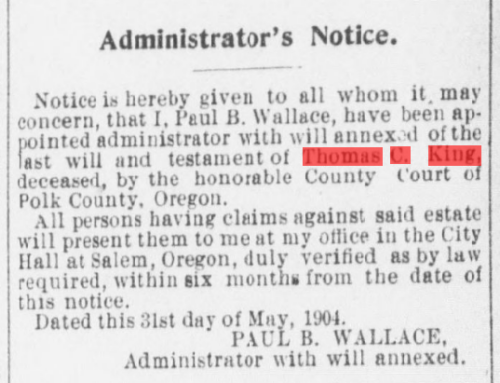
Kaylyn, way to go. Good persistence in finding the facts. The stories this woman could have told us…